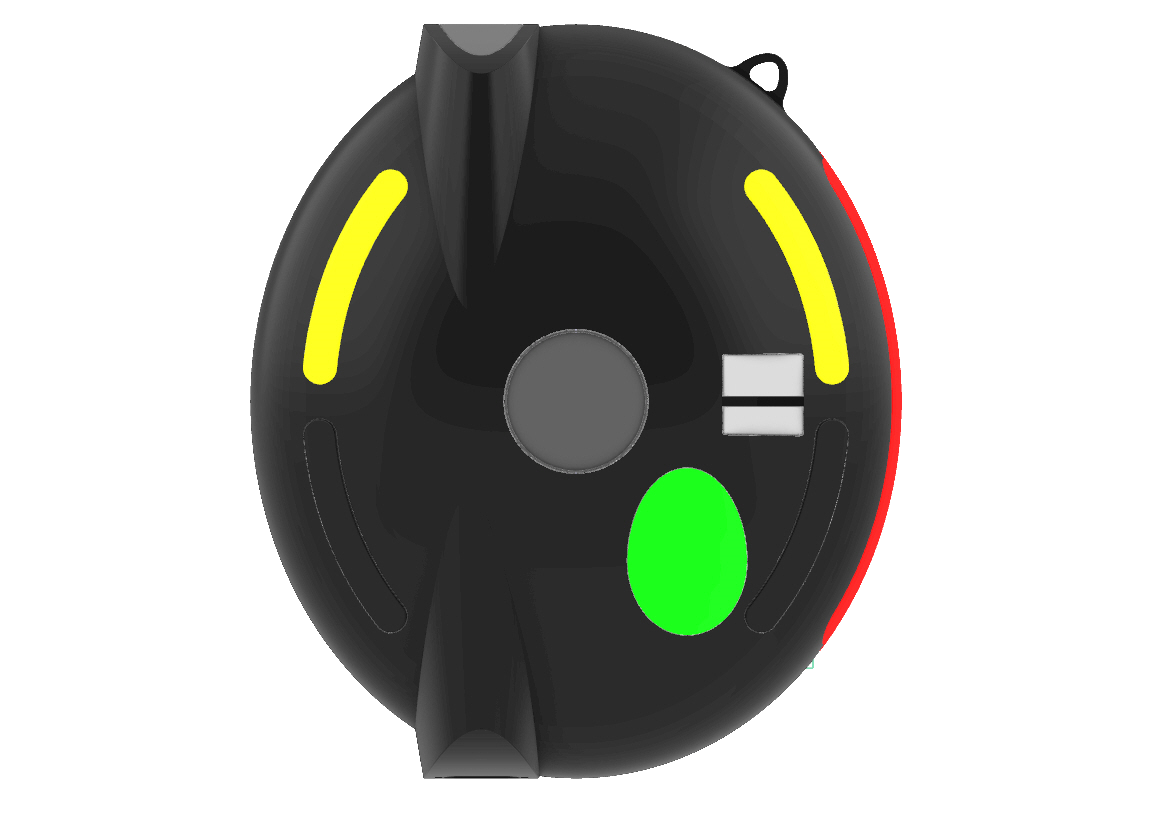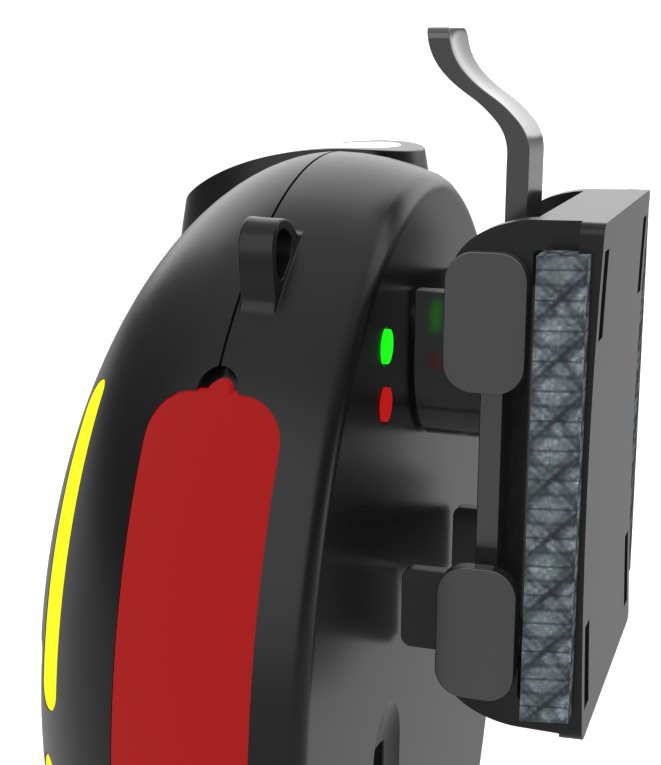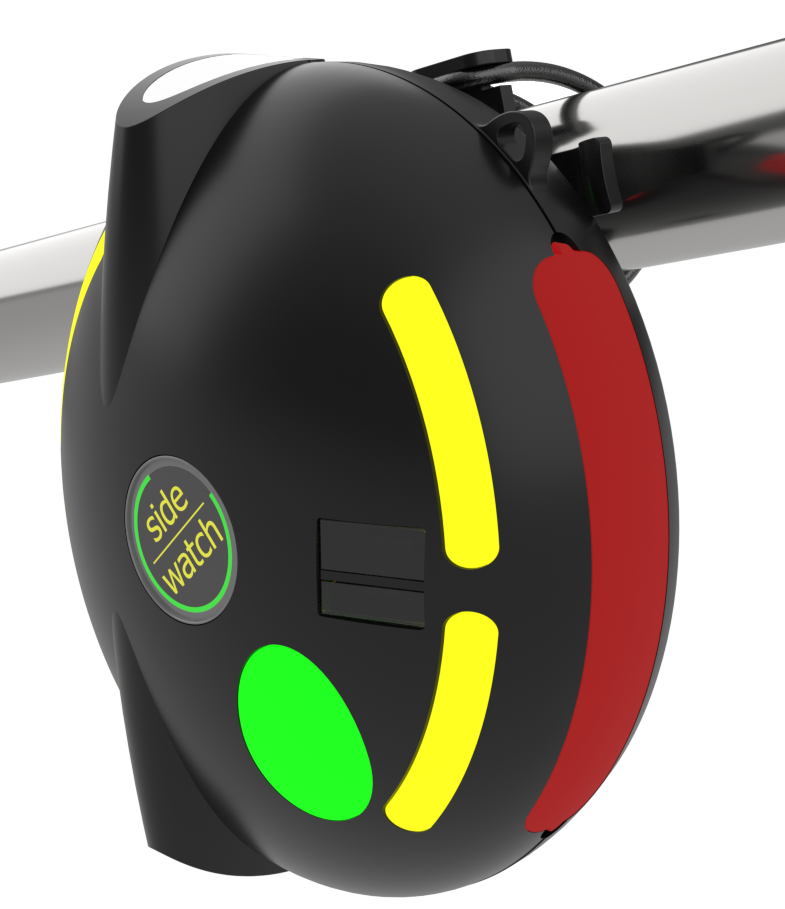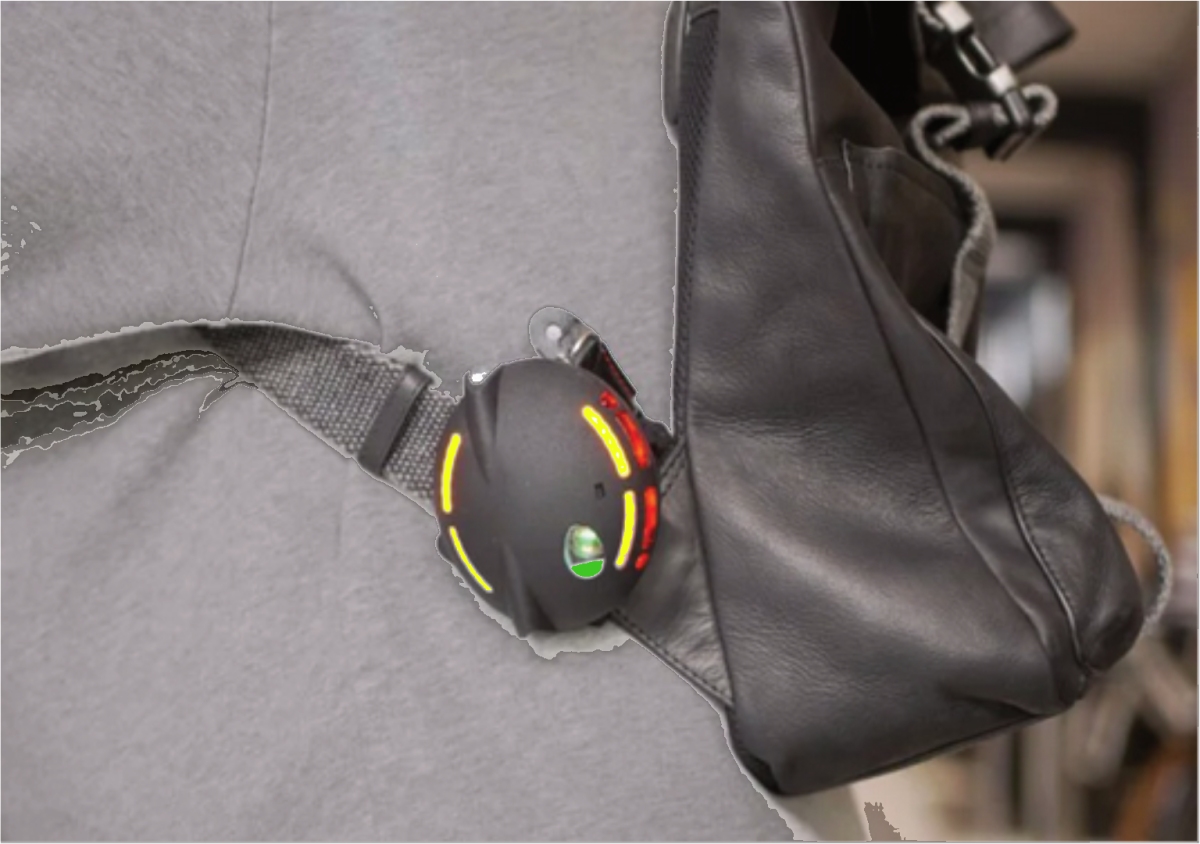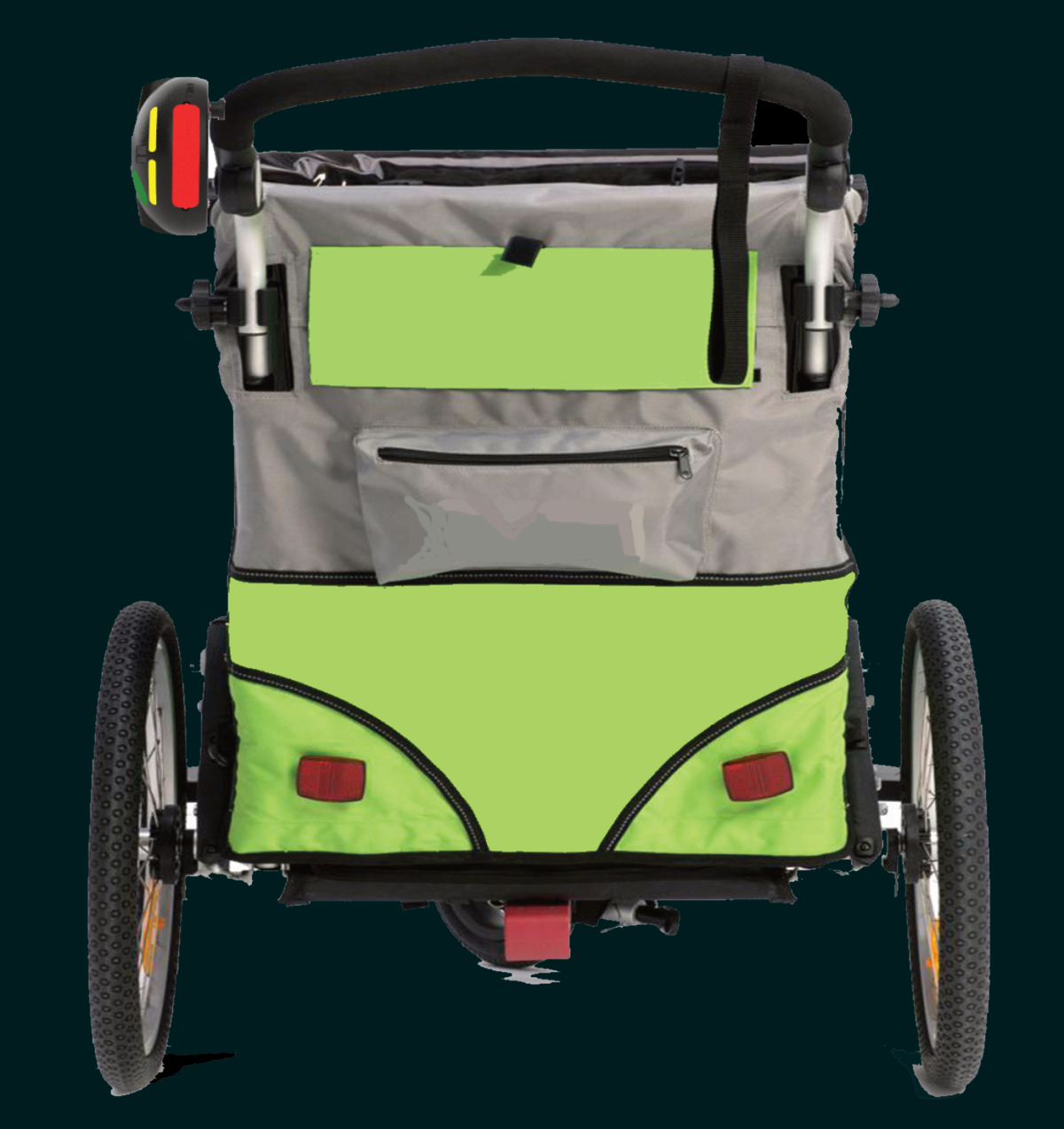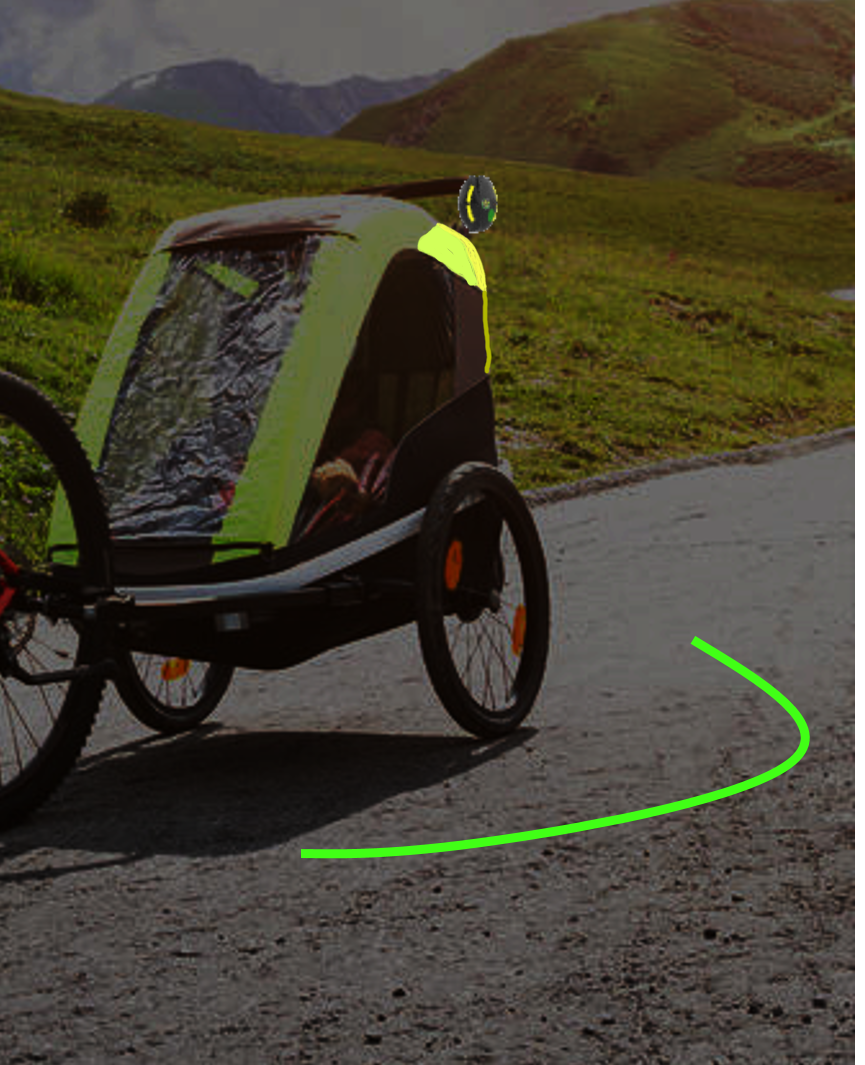Initiative details
In 2022, 2.017 fatalities happened in the EU where cyclists have been involved representing 10% of all road fatalities.
More than 60% of all accidents between motor vehicles and bicycles occur when turning and crossing because bicycles are not illuminated from the side and the modern front and rear lights fitted emit a very focussed light that cannot be seen from the side.
The side reflectors, which are also mandatory, are only visible when they are illuminated.
For these reasons, both in bad weather and in the dark, bicycles are difficult or impossible to see from the side and are therefore often not noticed when they pass a car on the right-hand side, for example in front of traffic lights.
Bicycles are also difficult to recognise when crossing a road with oncoming traffic, as the multi-LED lights used on motor vehicles today shine much brighter than previous headlights.
Another problem is that car drivers do not keep the required minimum distance. Either because they are unable to judge the correct minimum distance or because they do not recognise bicycles in the dark.
Similarly, motorists are not made aware when they fall below the minimum distance and are therefore unable to react.
Intelligent, reactive lighting systems for bicycles are therefore needed in urban traffic to indicate to motorists the minimum distance to be maintained, warn them if the minimum distance is not observed and provide permanent side lighting for the bicycle.
More than 60% of all accidents between motor vehicles and bicycles occur when turning and crossing because bicycles are not illuminated from the side and the modern front and rear lights fitted emit a very focussed light that cannot be seen from the side.
The side reflectors, which are also mandatory, are only visible when they are illuminated.
For these reasons, both in bad weather and in the dark, bicycles are difficult or impossible to see from the side and are therefore often not noticed when they pass a car on the right-hand side, for example in front of traffic lights.
Bicycles are also difficult to recognise when crossing a road with oncoming traffic, as the multi-LED lights used on motor vehicles today shine much brighter than previous headlights.
Another problem is that car drivers do not keep the required minimum distance. Either because they are unable to judge the correct minimum distance or because they do not recognise bicycles in the dark.
Similarly, motorists are not made aware when they fall below the minimum distance and are therefore unable to react.
Intelligent, reactive lighting systems for bicycles are therefore needed in urban traffic to indicate to motorists the minimum distance to be maintained, warn them if the minimum distance is not observed and provide permanent side lighting for the bicycle.
Initiative date
Who was/is your target audience?
Policy makers
Public authorities
Children 0-16
Young adults 17-25
Adults
Parents
Seniors
Company employees
Fleet operators
Car drivers
Car drivers – professional
Educational staff
Emergency services
Public transport
Van drivers
Lorry/truck drivers
Cyclists
Micromobility riders
Powered two wheeler riders (excluding micromobility)
Pedestrians
Others
Topic
Improve vehicles and infrastructure
Organisation details
Digonomics GmbH
Enterprise
Germany
Pullach, Bavaria
Contact name
Thomas Klotz
Telephone number
+491728205563
t.klotz@digonomics.com
Website link
Project activities
If you work together with external partners, list the most important partners and briefly describe their role.
Klotz Shenzhen, development of electronic circuits and printed circuit boards
Innovasia GmbH, development of plastic tools
Innovasia GmbH, development of plastic tools
Please describe the project activities you carried/are carrying out and the time period over which these were implemented.
It was necessary to develop a distance sensor based on time-of-flight technology that is able to detect objects at a distance of between 0 and 4 metres and trigger an alarm when certain distances are reached.
Development of lights that are bright enough to be seen in daylight but do not dazzle other road users.
Development of a lighting arrangement that combines static warning lights with flashing warning lights.
Development of an integrated laser projector equipped with a sensor that switches off the laser as soon as the laser projector is moved from its normal vertical position.
Development of a power-saving circuit that allows the device to operate for at least 4 hours without recharging.
Development of a case with all the elements so small that it can be attached to a bicycle frame or belt and easily carried in a pocket to prevent theft.
Development of various fastening devices for attaching the product to bicycle frames, belts, bags, saddles or frames of transport bicycles.
Development of an app that sends distance data to a smartphone that can be positioned in front of the cyclist and warns the cyclist without them having to turn their head.
Development of plastic moulds for housings and other mechanical parts that enable cost-effective assembly and are therefore robust enough to withstand heavy impacts when dropped.
Development of lights that are bright enough to be seen in daylight but do not dazzle other road users.
Development of a lighting arrangement that combines static warning lights with flashing warning lights.
Development of an integrated laser projector equipped with a sensor that switches off the laser as soon as the laser projector is moved from its normal vertical position.
Development of a power-saving circuit that allows the device to operate for at least 4 hours without recharging.
Development of a case with all the elements so small that it can be attached to a bicycle frame or belt and easily carried in a pocket to prevent theft.
Development of various fastening devices for attaching the product to bicycle frames, belts, bags, saddles or frames of transport bicycles.
Development of an app that sends distance data to a smartphone that can be positioned in front of the cyclist and warns the cyclist without them having to turn their head.
Development of plastic moulds for housings and other mechanical parts that enable cost-effective assembly and are therefore robust enough to withstand heavy impacts when dropped.
In terms of implementation, what worked well and what challenges did you need to overcome?
The device represents a completely new category of bicycle lighting and we had to invent everything from scratch. We had to think about where the product could be mounted, what the minimum size should be and what dimensions could not be exceeded. We had no examples or even similar products to give us an idea of how a side light should be designed.
As there were and are no national or European specifications, we had to deduce from the existing specifications for front and rear lights which elements are permitted under the applicable road traffic regulations and which could be rejected by the national authorities.
As the number of road accidents between bicycles and cars has risen dramatically in the last three years, immediate action was required, which could only be achieved by motivating our international team of specialists comprising electronic designers, industrial designers and toolmakers to develop the device from inception to full industrialisation in just two years, so that it is now ready for production.
The cooperation with the Austrian authorities, represented by the Bundesministerium für Klimaschutz, Umwelt, Energie, Mobilität, Innovation und Technologie and the Kuratorium für Verkehrssicherheit, worked very well, providing us with important information on upcoming regulations to ensure that we would not come into conflict with them.
As there were and are no national or European specifications, we had to deduce from the existing specifications for front and rear lights which elements are permitted under the applicable road traffic regulations and which could be rejected by the national authorities.
As the number of road accidents between bicycles and cars has risen dramatically in the last three years, immediate action was required, which could only be achieved by motivating our international team of specialists comprising electronic designers, industrial designers and toolmakers to develop the device from inception to full industrialisation in just two years, so that it is now ready for production.
The cooperation with the Austrian authorities, represented by the Bundesministerium für Klimaschutz, Umwelt, Energie, Mobilität, Innovation und Technologie and the Kuratorium für Verkehrssicherheit, worked very well, providing us with important information on upcoming regulations to ensure that we would not come into conflict with them.
Evaluation
Please summarise how you have evaluated the initiative’s impact (e.g. social media reach, survey, feedback forms, statistics).
As we were not allowed to publish anything before filing patent applications, we were only able to start acceptance tests after the first year of development. It was also necessary to use fully functional samples that we could present to test persons or institutions.
We asked the Verband Zukunft Fahrrad in Berlin for their expertise and the Allgemeiner Deutscher Fahrradverband in Kempten for their opinion.
We contacted Prof Dr Thomas Zeh at Kempten University of Applied Sciences, who had carried out a field test and measured the distance between cars and bicycles. His research showed that more than 60% of cars do not maintain the minimum distance of 1.5 metres between cars and cyclists.
We presented the product to Radlobby.at, the Austrian cycling organisation, which helped us to get in touch with the Austrian authorities.
We contacted German police station managers who confirmed that their experiences matched our assumptions.
We analysed studies by the Austrian Safety Board and the University of Applied Sciences, Master's thesis by Amadeus Gabriel Helling, BSc on ‘Cycling in the dark....’.
We asked the Verband Zukunft Fahrrad in Berlin for their expertise and the Allgemeiner Deutscher Fahrradverband in Kempten for their opinion.
We contacted Prof Dr Thomas Zeh at Kempten University of Applied Sciences, who had carried out a field test and measured the distance between cars and bicycles. His research showed that more than 60% of cars do not maintain the minimum distance of 1.5 metres between cars and cyclists.
We presented the product to Radlobby.at, the Austrian cycling organisation, which helped us to get in touch with the Austrian authorities.
We contacted German police station managers who confirmed that their experiences matched our assumptions.
We analysed studies by the Austrian Safety Board and the University of Applied Sciences, Master's thesis by Amadeus Gabriel Helling, BSc on ‘Cycling in the dark....’.
What has been the effect of the activities?
We have been invited to present the new product, which is called Sidewatch, at various promotional activities, such as the Bike Festival in Vienna, and have been in contact with many potential distribution and promotion partners.
In terms of distribution, we have to overcome the problem of a completely new product category, which makes it very difficult to find distribution partners as they have no references to compare the risk of their investment in stock.
That is why we have developed an online sales concept and support young cyclists with special discounts that allow them to buy the Sidewatch earlier and at a lower cost than they will be charged after launch.
In addition, the Sidewatch has gained credibility through the acceptance of the above-mentioned activities and we have been able to get in touch with various institutions.
For example, we are now developing a donation programme for Sidewatch in collaboration with national Rotary clubs in different countries that specifically care for young and vulnerable cyclists.
We are launching a campaign in Spain in collaboration with local partners to make Spain the second country where Sidewatch will be available.
These activities will help to raise awareness among the population and local authorities about the lack of bicycle lighting and the associated fatal consequences.
In terms of distribution, we have to overcome the problem of a completely new product category, which makes it very difficult to find distribution partners as they have no references to compare the risk of their investment in stock.
That is why we have developed an online sales concept and support young cyclists with special discounts that allow them to buy the Sidewatch earlier and at a lower cost than they will be charged after launch.
In addition, the Sidewatch has gained credibility through the acceptance of the above-mentioned activities and we have been able to get in touch with various institutions.
For example, we are now developing a donation programme for Sidewatch in collaboration with national Rotary clubs in different countries that specifically care for young and vulnerable cyclists.
We are launching a campaign in Spain in collaboration with local partners to make Spain the second country where Sidewatch will be available.
These activities will help to raise awareness among the population and local authorities about the lack of bicycle lighting and the associated fatal consequences.
Please briefly explain why your initiative is a good example of improving road safety.
Since our company and the companies of our project partners do not have much experience in the mobility or bicycle safety sector, we were able to fully utilise our decades of experience in industrial product development, product design and manufacturing to identify a problem and develop a unique solution. Other companies have to consider existing product lines, existing distribution channels and partners, and sometimes internal resistance, which we didn't have to consider.
This helped us to find a cost-effective solution that was developed in the shortest possible time together with international partners.
This helped us to find a cost-effective solution that was developed in the shortest possible time together with international partners.
How have you shared information about your project and its results?
We have produced information material about the product and set up a website www.sidewatch.life showing the Sidewatch. This website is in English and is linked to a video that we have recorded showing the Sidewatch in action. The soundtrack of the video is also in English and was recorded by a professional speaker.
We have also produced brochures in English, German and Spanish explaining both the product and our donation concepts.
We have produced 100 samples for field tests and for international customer demonstrations.
We now plan to work with cycling organisations to promote Sidewatch in the countries where it will soon be available.
We have also produced brochures in English, German and Spanish explaining both the product and our donation concepts.
We have produced 100 samples for field tests and for international customer demonstrations.
We now plan to work with cycling organisations to promote Sidewatch in the countries where it will soon be available.

